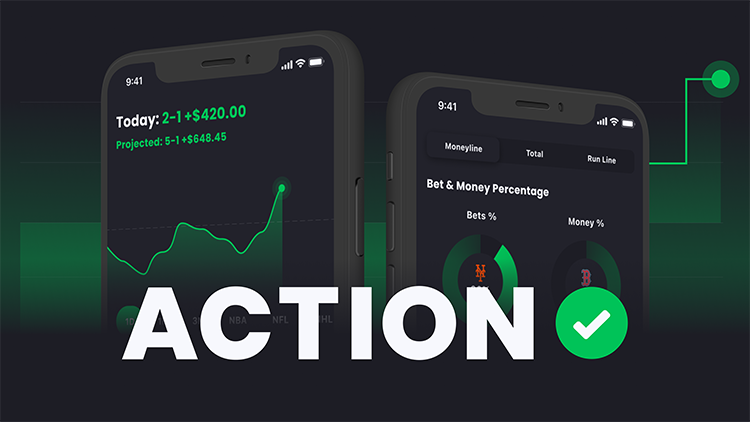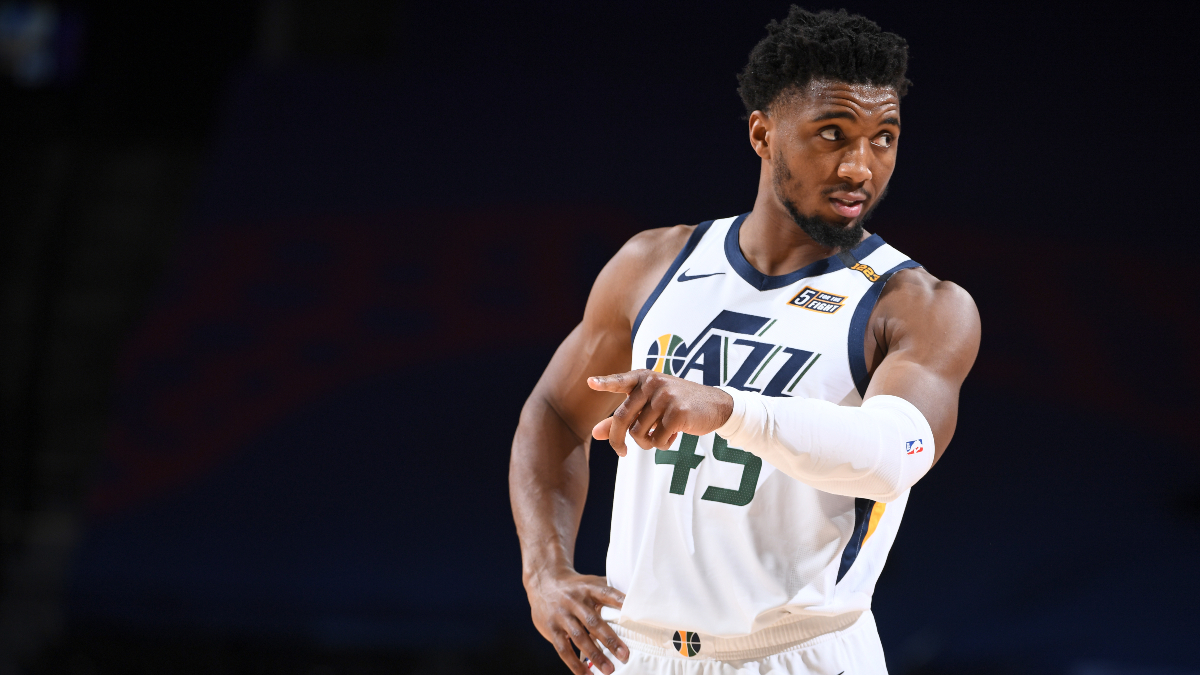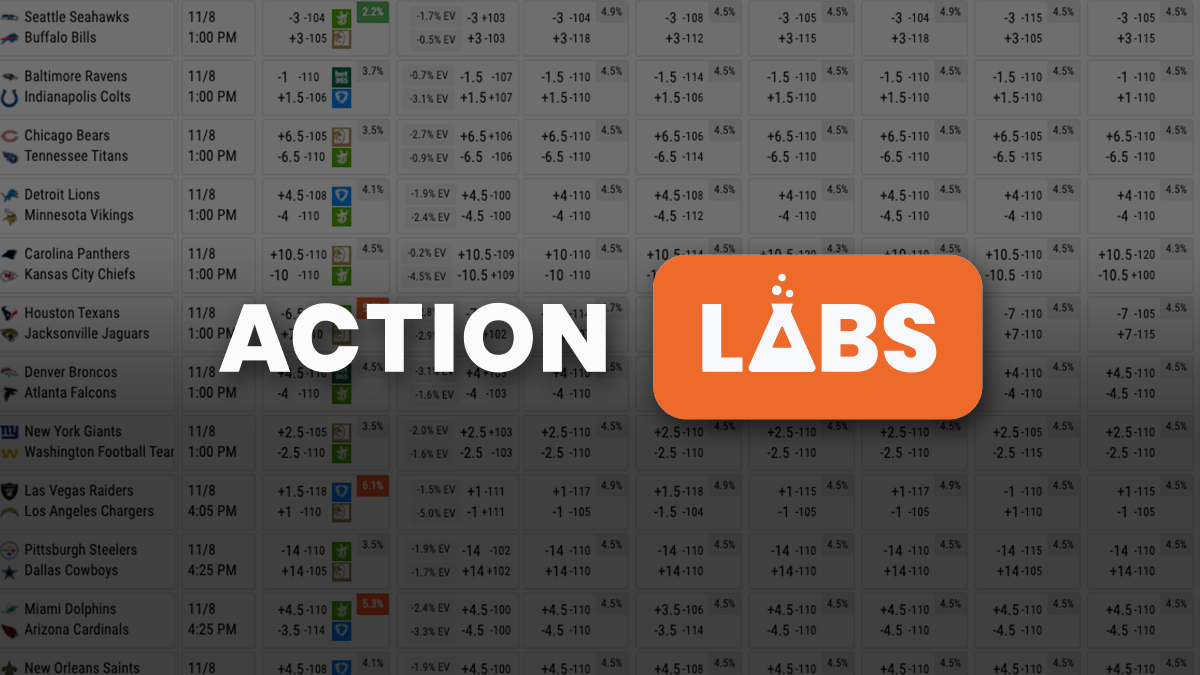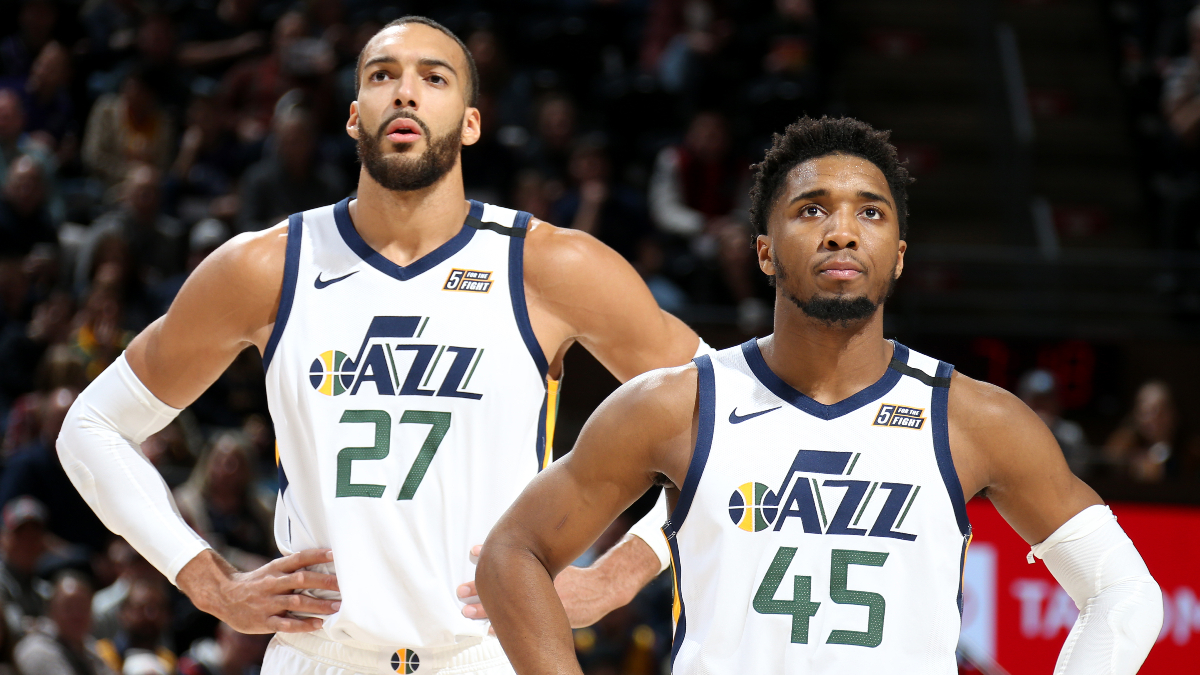
Melissa Majchrzak/NBAE via Getty Images. Pictured: Rudy Gobert #27 of the Utah Jazz and Donovan Mitchell #45 of the Utah Jazz
The sudden mid-season ascent of the Utah Jazz has been the best story of the NBA season so far. A small market franchise with a history of playoff heartache recovers from a 3-1 collapse in the bubble and takes the league by storm.
What should bettors know about the Jazz going into the second half of the season, and are they not-so-secretly the should-be favorite in plain sight?
Usually, this is the part where I reveal to you some fatal flaw, some analysis or data point that shows the Jazz aren’t actually as good as their gaudy 27-9 record.
Nope, that’s not really the case here. The Jazz are not frauds.
Statistical site Cleaning The Glass strips out garbage time to give you a better evaluation of how teams operate when the game matters. By their metrics, the Jazz have the second-best offense and the second-best defense.
Even more surprising, according to CTG’s expected (Pythagorean) wins metric, the Jazz should actually have won more games, currently -1.9 behind where they should be.
Basketball-Reference’s SRS metric evaluates point differential against Strength of Schedule. The Jazz not only rank first, but the gap between them and the second-place Phoenix Suns is the same as the gap between the Suns and the eighth-place Philadelphia 76ers.
Maybe you think the Jazz are just shooting the lights out and have to slow down. Indeed, Utah has shot exceptionally well. But the Jazz don’t even rank first in Effective Field Goal percentage — that would be the Brooklyn Nets.
Their differential between actual and expected field goal percentage (based on league averages of shot location) is still just the fifth-highest in the league. There’s no wild outlier here.
Bench weakness? Nope, every player with over 100 minutes played this season has outscored the opponent while on the floor. Over-reliance on transition scoring? Nope, the Jazz rank third in half-court offense.
The Jazz offense isn’t especially complicated. It hearkens back to what made the Jazz of the 90’s so good: pick-and-roll. They space the floor with great shooters and have both Rudy Gobert and Derrick Favors setting punishing screens.
Watch the bottom corner here. The defender can’t help the middle on Gobert’s roll without giving up an open corner 3-pointer. Lonzo Ball tries to help out when Conley gets around the corner, which leaves Donovan Mitchell one pass away.
On this play, the Thunder use Lou Dort (great defender) and Al Horford (great defender) in drop coverage. Their expectation of the pick-and-roll has Horford one step to Mitchell’s left on the other side of Gobert’s screen.
Dort doesn’t expect Mitchell to reject the screen, and when he gets the edge, there’s no chance for either to contain Gobert or weak side help to come.
Here, the Lakers decide to overload the strong side when the Jazz run pick-and-roll cleared out. Markieff Morris is five steps away from his defenders to try and help both on Mike Conley and Gobert.
There’s just no way for Morris to recover on spread pick-and-roll:
The Jazz offense is firing on all cylinders from deep, averaging the most made 3’s per 100 possessions this season. They also allow the fewest makes (10.8) and attempts (30.6) per game while holding opponents to the seventh-lowest 3-point percentage in the NBA (35.4%).
The Jazz have 23 double-digit wins. The Lakers and Clippers have 26 combined.
The Market Perspective
Despite all this success, the Jazz are still +800 or longer across the market. They’ve held relatively firm given the gap between Utah’s success and the rest of the league.
This isn’t to say there has been no action on the Jazz. At PointsBet, the Jazz accounted for just 1.8% of the preseason handle to win the Western Conference. Before the All-Star break, Jazz Western title bets accounted for 17.9%, according to figures provided to Action Network by the sportsbook.
The Jazz also hold the third-highest percentage of handle for the league title at PointsBet. That figure is even higher at BetMGM:
NBA Title Futures by number of bets and by money at @BetMGM pic.twitter.com/Gket1Px2s9
— Darren Rovell (@darrenrovell) March 9, 2021
But still, there’s not a flood behind the Jazz.
The optimist’s view of the Jazz eschews other comparisons (which we’ll come to later) in favor of the 2015 Warriors. Maybe this is a sleeping giant, or more accurately, a dragon in plain sight. But in 2015, the Warriors began a +2800 in preseason to win the title (compared to +3000 for the Jazz), and by the All-Star break, Golden State was +425.
So the Jazz are nearly twice as long to win the title as the Warriors were. Golden State ascended during a gap year; the Heat dynasty had just folded with LeBron James’ departure, and no one had filled the gap (yet).
Why is there more skepticism for Utah?
The League Perspective
“(The Jazz) are well coached and the roster’s talented. But the playoffs are more about adaptability than ever,” one scout told Action Network. “And the one thing they are not is adaptable.”
Utah uses the same coverage that most teams in the NBA use in pick-and-roll coverage, dropping the big to contain both the ball handler and roll man. Their guards are good enough at getting over screens to contest pull-up jumpers, and Gobert is a master at managing the space on those possessions.
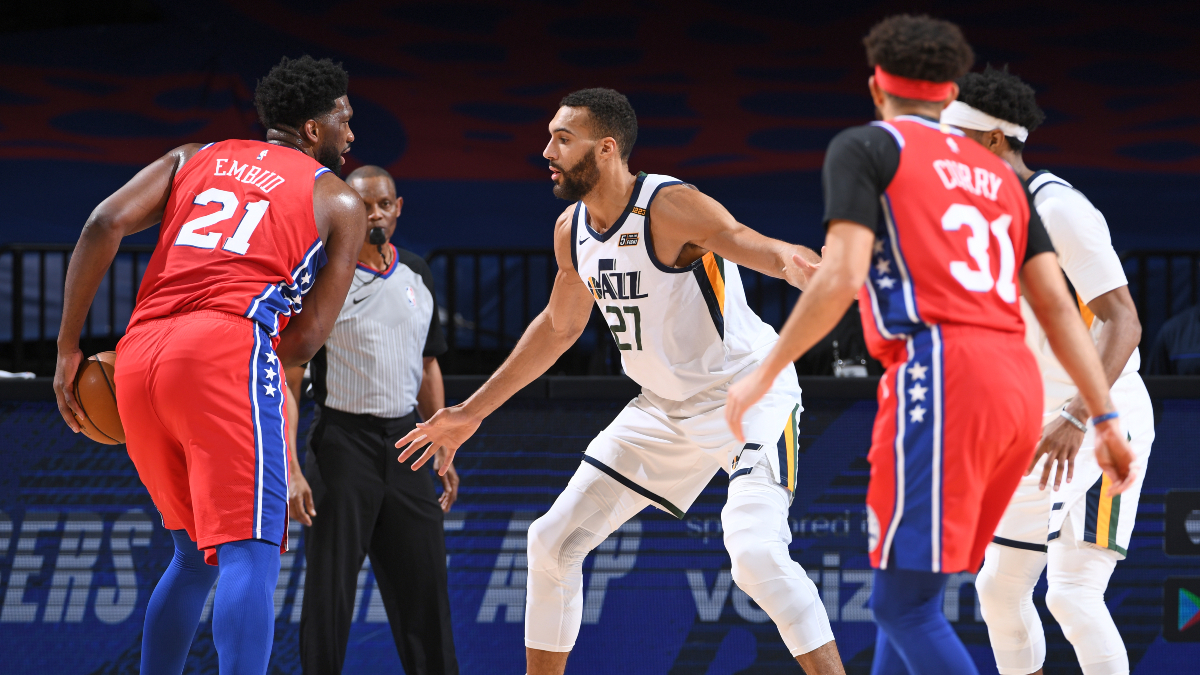 Garrett Ellwood/NBAE via Getty Images. Pictured: Joel Embiid #21 of the Philadelphia 76ers.
Garrett Ellwood/NBAE via Getty Images. Pictured: Joel Embiid #21 of the Philadelphia 76ers.But in the playoffs, it becomes harder. Over the course of a series, players become more used to the rhythms of coverage, and the scorers are all superstars.
Utah uses a switch coverage at the sixth-lowest frequency and allows the ninth most per opportunity, via Second Spectrum data provided to Action Network.
We’ve seen 3-point sharpshooting teams that aren’t the Warriors (anchored by arguably the two best shooters, ever) fall apart when faced with the stronger, faster closeouts in the playoffs.
The Jazz lost to the Nuggets when they couldn’t contain Jamal Murray or, by the end of the series, Nikola Jokic. The Clippers present a problem with mid-range scorers and the ability to keep pace from the arc. The Lakers present sheer physicality and defensive challenges.
Utah will be favorites against any team that isn’t the Clippers or Lakers in the West. But there’s still reason for skepticism when it comes to the playoffs.
The Duration
Finally, there’s the peaking issue.
In 2014, the Indiana Pacers had a deep and talented team that stormed to the best record in the league at the All-Star break, only to slide in the second half of the season, going 16-14 after the break.
In 2015, the Hawks played a magnificent brand of basketball and led the league at the break, only to go 17-11 the rest of the way (compared to the Warriors’ 25-6 mark), before being swept by the Cavaliers in the playoffs.
The Pacers were 33-7 three weeks before the break. They lost four games, over half of their previous total losses, before the break, signaling their slide. They lost two of three before All-Star.
The Hawks won 19 straight two weeks before the break, then lost three of six and two of their last three before All-Star.
Utah won 20-of-21 games going into the final seven games before the All-Star break this season. They lost four of those seven games and two of their last three.
Now, the Jazz can be better than both of those teams with better top-end talent in Mitchell and Gobert, and they can still fall short of the title.
The problem is simply that it’s tough for any team to play at the level Utah has the entire season. It’s the reason champions coast through the regular season. The playoffs are a full 68 days away. The postseason stretches another three months beyond that.
Research has shown that the play in early season and midseason is more closely correlated to postseason success than how you play going into the postseason. I’m not advocating for the idea of peaking at the right time. But there has to be an awareness of the kind of sustained excellence that betting the Jazz to win the title would require.
There’s nothing Utah could really do otherwise. What’s the solution? Play worse? Lose more games? Tank so you don’t peak too early? That’s nonsense.
Teams don’t get to choose when they play well; they do their best, and that’s all they can do. And yet, sustaining a level of play, even with so few outliers, as they have, is difficult.
It’s fine to believe the Jazz can continue to cover at a 69% rate as they have this season. They have the easiest remaining schedule via Positive Residual. I can’t advocate fading them.
But much like the mechanisms that have made them such a great offense this year, I think their futures are a hard pass as well.
